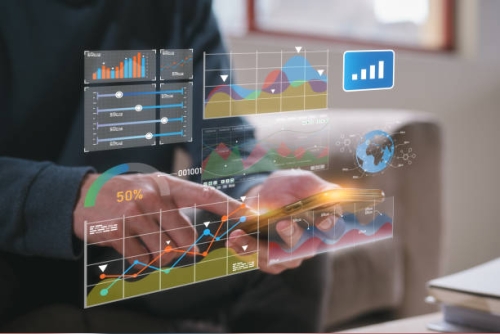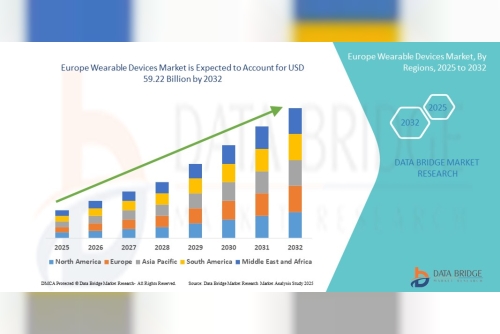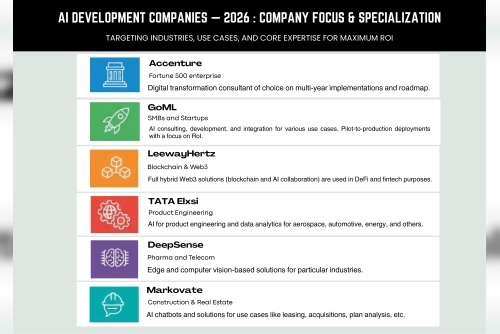In recent years, machine learning has revolutionized various industries, and financial markets are no exception. With advancements in artificial intelligence, data-driven trading strategies have become increasingly sophisticated, offering traders and financial institutions powerful tools to optimize their investment decisions. The use of machine learning in trading has opened new possibilities, from predicting market movements to executing high-frequency trades with precision.
Understanding Machine Learning in TradingMachine learning (ML) is a subset of artificial intelligence (AI) that enables systems to learn from data and make decisions without explicit programming. In trading, ML algorithms analyze vast amounts of financial data, identify patterns, and generate insights that guide investment strategies. This automation helps traders improve decision-making, minimize risks, and optimize returns.
Unlike traditional statistical models, ML algorithms can process non-linear relationships and adapt to changing market conditions. This makes them particularly useful in financial markets, where data is highly dynamic and complex. Traders use ML models to develop predictive analytics, algorithmic trading, sentiment analysis, and risk management strategies.
Applications of Machine Learning in Trading1. Predictive Analytics and Market ForecastingOne of the primary applications of ML in trading is predictive analytics. Algorithms analyze historical data to forecast future price movements. Techniques like regression analysis, time-series forecasting, and deep learning models such as Long Short-Term Memory (LSTM) networks are commonly used to predict stock prices, commodity prices, and foreign exchange rates.
Predictive analytics enables traders to anticipate trends and make informed decisions, improving profitability. For instance, hedge funds use ML-driven models to predict earnings surprises and exploit arbitrage opportunities.
2. Algorithmic TradingAlgorithmic trading, or algo-trading, involves using computer programs to execute trades at high speed based on predefined rules. ML enhances algo-trading by enabling models to adapt to new market conditions dynamically. Some popular techniques include:
Reinforcement Learning: Algorithms learn optimal trading strategies by interacting with the market environment and adjusting actions based on rewards.
Statistical Arbitrage: ML models identify mispriced securities and execute trades to exploit price inefficiencies.
Market Microstructure Analysis: Machine learning helps analyze order book data to optimize trade execution and minimize market impact.
3. Sentiment AnalysisFinancial markets are heavily influenced by investor sentiment, news events, and social media trends. Sentiment analysis involves using natural language processing (NLP) techniques to analyze financial news, earnings reports, and social media discussions to gauge market sentiment.
ML algorithms process unstructured data from sources like Twitter, Bloomberg, and financial blogs to identify bullish or bearish sentiment. Traders use this information to adjust their strategies and hedge against potential risks.
4. Risk Management and Portfolio OptimizationRisk management is crucial in trading, and ML provides advanced tools to identify and mitigate risks effectively. Algorithms assess market volatility, detect anomalies, and optimize portfolio allocations based on risk-return trade-offs.
Techniques like Monte Carlo simulations, Value at Risk (VaR) models, and Bayesian networks are enhanced by ML to provide more accurate risk assessments. Portfolio managers leverage ML-driven asset allocation models to maximize returns while minimizing exposure to market downturns.
5. Fraud Detection and Anomaly DetectionFinancial markets are susceptible to fraud, insider trading, and market manipulation. ML-powered anomaly detection models analyze transaction patterns to detect fraudulent activities in real time. Techniques like clustering, isolation forests, and neural networks help identify unusual trading behavior, ensuring compliance with regulatory standards.
Machine Learning Techniques Used in TradingSeveral ML techniques play a crucial role in trading strategies. Some of the most commonly used methods include:
1. Supervised LearningSupervised learning algorithms train models using labeled data. In trading, supervised learning is used for price prediction, classification of assets, and risk assessment. Examples include:
Linear and Logistic Regression: Used for price trend forecasting.
Random Forests and Gradient Boosting: Applied to feature selection and improving prediction accuracy.
Neural Networks: Used for deep learning models to identify complex patterns in financial data.
2. Unsupervised LearningUnsupervised learning models identify hidden patterns and relationships in data without labeled inputs. Common applications include:
Clustering: Identifies similar assets based on price movements (e.g., k-means clustering for sector classification).
Principal Component Analysis (PCA): Reduces dimensionality in large datasets to improve model efficiency.
3. Reinforcement LearningReinforcement learning (RL) is an advanced ML technique where agents learn optimal trading strategies through trial and error. RL models, such as Q-learning and deep reinforcement learning, help traders make automated decisions by maximizing cumulative rewards over time.
4. Deep Learning and Neural NetworksDeep learning models, particularly convolutional neural networks (CNNs) and recurrent neural networks (RNNs), process large-scale financial data to extract meaningful insights. These models are extensively used for time-series forecasting, pattern recognition, and high-frequency trading strategies.
Challenges and Risks in Machine Learning for TradingDespite its potential, implementing ML in trading comes with challenges and risks:
1. Data Quality and AvailabilityML models require vast amounts of high-quality data for training and validation. Financial data may be noisy, incomplete, or biased, leading to inaccurate predictions. Ensuring data integrity is critical for model performance.
2. Overfitting and Model RobustnessOverfitting occurs when a model learns patterns specific to historical data but fails to generalize to new market conditions. Robust model validation techniques, such as cross-validation and regularization, are necessary to prevent overfitting.
3. Market Impact and Execution RisksML-based trading strategies can impact market dynamics, leading to unintended consequences such as flash crashes. Risk mitigation measures, such as circuit breakers and position limits, are essential to prevent market disruptions.
4. Regulatory and Ethical ConcernsThe increasing use of ML in trading raises ethical and regulatory concerns. Algorithmic transparency, compliance with financial regulations, and prevention of market manipulation are critical considerations for ML-driven trading systems.
ConclusionMachine learning has transformed the trading landscape, offering advanced tools for predictive analytics, algorithmic trading, sentiment analysis, and risk management. While challenges such as data quality, overfitting, and regulatory concerns persist, ongoing advancements in AI and computing technologies continue to refine ML-based trading strategies.
For professionals looking to harness the power of ML in trading, specialized training programs such as the Certificate Program in AI Trading by the Indian Institute of Quantitative Finance (IIQF) offer valuable insights and hands-on experience. By understanding and leveraging ML techniques, traders and financial institutions can gain a competitive edge in today’s fast-evolving financial markets.












